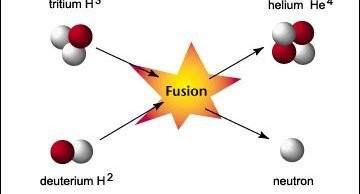
Nine technologies that could change the world (maybe)
Energy companies and analysts spend a lot of time gazing into metaphorical crystal balls. Oil investments can cost billions, for example; investors, for their part, want to place winning bets. McKinsey has its own in-house seer, a think-tank known as the McKinsey Global Institute, which recently came out with a big report on a big subject: the future of global resources.
The report looks at both likely and unlikely scenarios. In terms of the likelier ones, the major point it makes is that technology—everything from data analytics to robotics to self-driving cars to sensors and control systems—will be the main source of future disruption, boosting efficiency and productivity at a startling rate. By 2035, MGI estimates that the value to the economy of technological changes could be as much as $1.6 trillion, due to a combination of lower demand, greater productivity, and substitution. That’s a tidy sum—and that money could then be redeployed to other, more productive parts of the world economy. Another implication is that even as the global economy and population grow, these trends mean that primary energy demand—a term that encompasses both power and transport—could peak in less than a decade and certainly by 2035. Finally, MGI (as well as most other analysts) projects that the role of renewables like wind and solar will increase, although maybe not fast enough to make a big dent in greenhouse-gas emissions.
These predictions are interesting, and MGI’s analysis is well informed by the data. But what about stuff for which there is little or no information? That can be even more interesting. So what follows is speculative—a longish word meaning “guess”—but here are a few technologies of the future that MGI thinks have a shot to succeed. In the process, they could up-end even the more optimistic scenarios. Here are nine possibilities, in no particular order.
Biofuels and microbial leaching. The creation of enhanced micro-organisms such as bacteria and yeast can be used to build create new, cheaper products. Some mining companies are using such microorganisms to improve recovery and release of metals from ore. Ultimately, metals could be extracted from ore in a way similar to oil and gas from fracking—and with similar economic effects.
Graphene and nanotubes: Superconductors, ultra-capacitor applications, improved battery technologies, and next-generation electronics. Carbon materials are already used in a number of electronic devices; it will also be important in energy storage. When costs decline, more applications will become plausible, probably replacing silicon-based systems.
Traveling wave reactors, thorium reactors, and other kinds of nuclear fission. For decades, the Holy Grail of nuclear has been that it would create cheap energy with little waste; if that ever happened, it could become a lot more popular than it has been in many places. Traveling wave reactors, which burn fuel made from depleted uranium, are one possibility. Thorium reactors use thorium instead of uranium; thorium is much more abundant and thus cheaper. It also cannot be used to make weapons.
Nuclear fusion. A breakthrough here could be truly transformative, and while this has been talked about for decades, to no avail, there is significant research under way. Like any new technology, it would be expensive at first. But it also represents producing energy from a clean, endless source—hydrogen from water.
Undersea mining and asteroid mining. Exotic, sure, but these could become more if the prices of conventional sources rise. And while this is hardly imminent, it is true that some companies are spending real money trying to figure out how to commercialize known deposits undersea and in space, the latter by sending robotic probes to near-earth asteroids.
Hyperloop transportation. This refers to electric-powered, on-demand, ground-based electric forms of transport that move at high speeds. It could move both cargo and people, short and long distances, and ultimately could compete with aviation. A pilot is being built to link Dubai and Abu Dhabi.
High-temperature superconducting materials. A great deal of power literally gets lost in transmission. With superconducting materials, solar power from the Sahara (or anywhere else) could be sent and used anywhere with near-perfect efficiency.
Super fracking. “Hydraulic fracturing” is a way to remove oil from shale deposits. While it is controversial in some places, it is a well-established technology. Thanks in large part to fracking, the United States now produces 99 percent-plus of the natural gas it uses. At the moment, though, it recovers at best 10 percent of the oil. Increase that to 50 to 70 percent, the world would be awash in cheap oil.
Methane hydrates. Sometimes known as “fire ice,” these reserves are trapped at low temperatures and high pressures, such as in permafrost or the deep ocean floor. No one really knows, but the possibilities are huge—these reserves could be larger than the known reserves of fossil fuels.
Some of this ideas will no doubt stay in the realm of science fiction. But if any of them turn into science fact, well, the world will be different—and better.
bsee mba at Ole Miss, UND
4yA working Nuclear fusion reactor is The answer To Our Clean energy Problem.
Student at Khalsa College Amritsar
5y,🌹 Intrnnetional Fashion Industry 🌹 *💐This company approved by Indian Government💐 *💐 MCA 💐 🍁कंपनी में पढेलिखे लड़के,लड़कियोकी अर्जेन्ट भर्ती शुरू हे,🍁 Income 16000/ to 35000/ पढाई - 10ht वी / 12htवी/पास उम्र- 18 ते 45 काम - ऑफिस काम ऑफिस टाइम - 10:00ते 05:00 🌹रविवार छुट्टी 🌹 * 4 दिन ट्रेनिंग * 2 din दिन में जाँयनिंग और परमानंट काम। 2500 रु.मे रहना खाना कंपनी के तरफ से *Documents: आधार कार्ड , पेन कार्ड , फोटो, एजुकेशन सर्टीफिकेट🌻 संपर्क - : 8728872473 1. Whatsapp No - 8199031912 documents भेजे 🌷Note - आपकी एक शेयर आप के दोस्त या भाई को काम दिला स🌷
LAWYER
5yBoooooom !!!
https://www.linkedin.com/feed/update/urn:li:activity:6454730075790241792